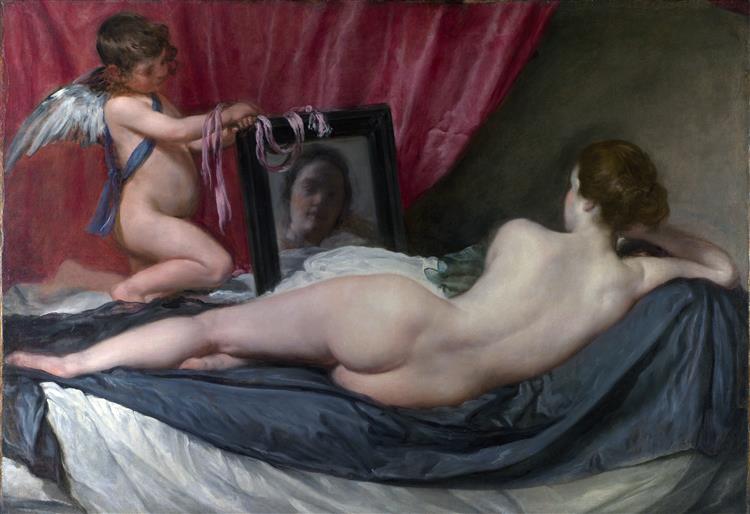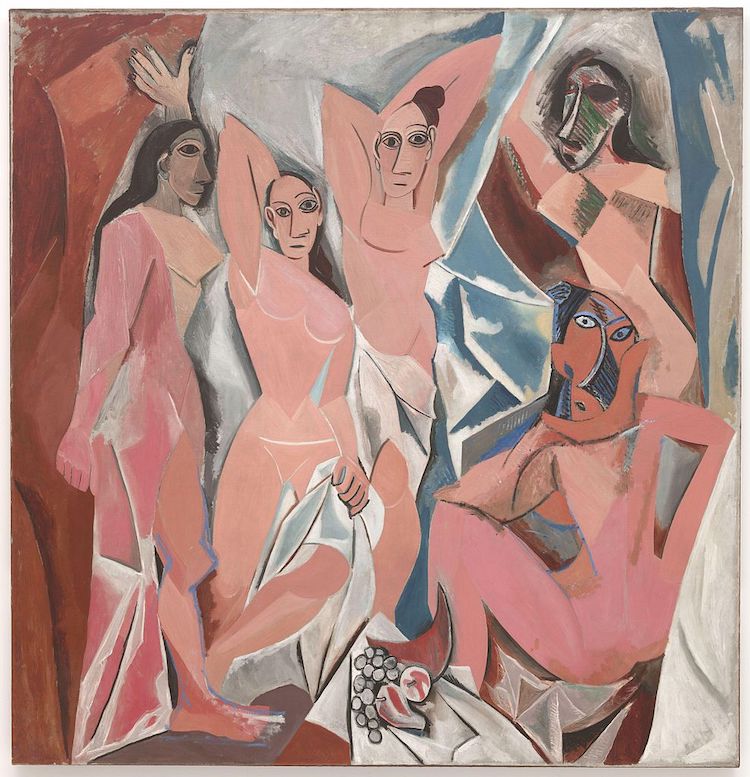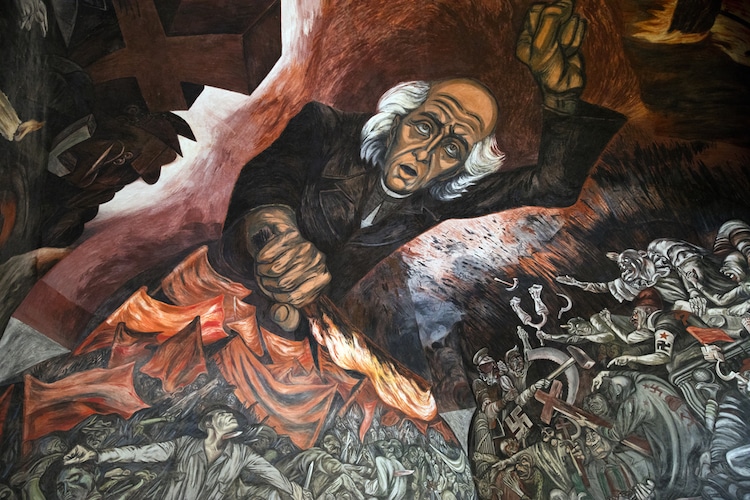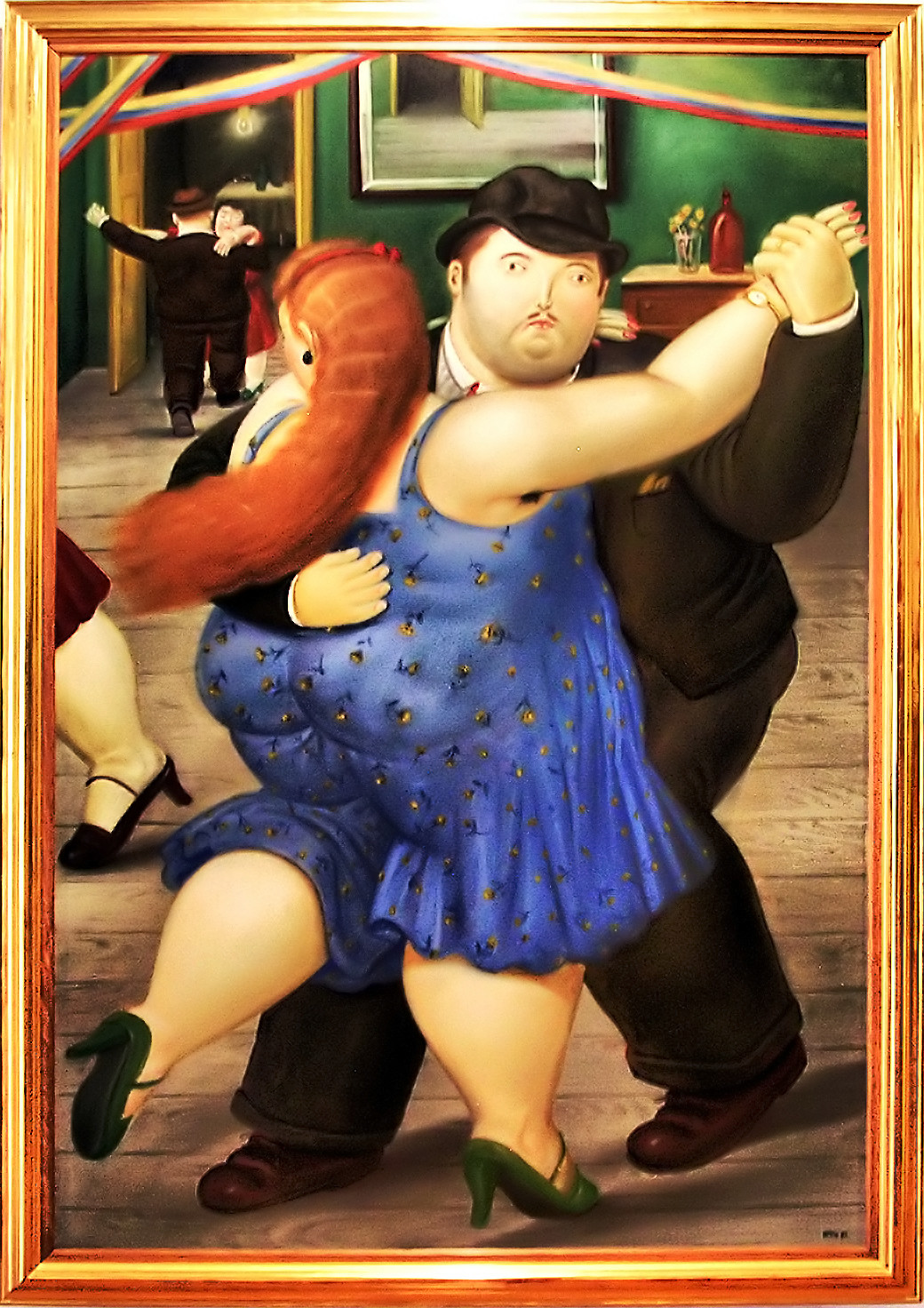
Photo (from left to right): Diego Velázquez self-portrait via Wikipedia (Public domain) | Frida Kahlo by Guillermo Kahlo via Wikipedia (Public domain) | Salvador Dalí by Allan Warren via Wikipedia (CC BY-SA 3.0) | Jean-Michel Basquiat by catwalker/Shutterstock
Throughout the history of art, Hispanic artists have carved an important position as trailblazers. Unafraid to take risks, they often incorporate symbols and techniques that recall their native cultures. Beyond this, many of the most famous Hispanic artists also use their creativity as a platform to discuss political and social upheaval in an effort to affect change and inspire national pride.
From 17th-century Spanish painter Diego Velázquez, who used brushstrokes reminiscent of 19th-century Impressionist painters, to trailblazer Jean-Michel Basquiat, who brought graffiti into the gallery, these artists set trends rather than follow tradition. Some, like Diego Rivera and José Clemente Orozco, specialized in murals and, in the process, have helped the public connect with their roots. Others, like Joan Miró and Salvador Dalí, didn’t limit themselves to one medium.
Take a look at this timeline of art history, from the Baroque period to today, and discover some of the most prolific Hispanic artists to influence Western culture.
Take a look at some of the great Hispanic artists that have shaped Western art and culture.
Diego Velázquez

“The Rokeby Venus” by Diego Velázquez. c.1644–1648. (Photo: Public domain via WikiArt)
|
Full Name
|
Diego Rodríguez de Silva y Velázquez
|
|
Born
|
baptized June 6, 1599 (Seville, Spain)
|
|
Died
|
August 6, 1660 (Madrid, Spain)
|
|
Notable Artwork
|
Las Meninas
|
|
Movement
|
Baroque
|
Born in Seville, Diego Velázquez (1599–1660) had a wildly successful career that made him the leading artist of what’s known as the Spanish Golden Age. Much of his artistic output is tied up with his role as court painter for King Philip IV, a position he held for nearly 40 years. His individualistic style stood apart from other Baroque painters and his loose brushstrokes would go on to influence both Realist and Impressionist painters. Great masters like Picasso, Dali, and Francis Bacon all paid homage to Velázquez by recreating some of his most famous artworks like Las Meninas.
Famous works of art: Portrait of Pope Innocent X (1650), Las Meninas (1656)
Francisco Goya

“The Third of May 1808 (Execution of the Defenders of Madrid)” by Francisco Goya. 1814. (Photo: Public domain via WikiArt)
|
Full Name
|
Francisco José de Goya y Lucientes
|
|
Born
|
March 30, 1746 (Fuendetodos, Aragon, Spain)
|
|
Died
|
April 16, 1828 (Bordeaux, France)
|
|
Notable Artwork
|
The Third of May 1808, Saturn Devouring His Son
|
|
Movement
|
Romanticism
|
One of the most influential painters of the 18th century, Francisco Goya (1746–1828) enjoyed enormous success during his lifetime. His work is often associated with the Romantic movement and he is considered one of the last great Old Masters. One of Goya’s most famous paintings, The Third of May 1808 (Execution of the Defenders of Madrid), is a politically charged masterpiece that honors the Spanish resistance during the country’s occupation by Napoleon. This groundbreaking work set a new precedent for how the horrors of war were depicted in art.
Famous works of art: The Third of May 1808 (1814)
Joaquín Sorolla

Joaquin Sorolla, “Walk on the Beach,” 1909 (Photo: Wikimedia Commons, Public domain)
|
Full Name
|
Joaquín Sorolla y Bastida
|
|
Born
|
February 27, 1863 (Valencia, Spain)
|
|
Died
|
August 10, 1923 (Cercedilla, Spain)
|
|
Notable Artwork
|
Walk on the Beach, Sad Inheritance
|
|
Movement
|
Impressionism
|
Impressionism is one of the most influential movements in art history. Although this catalyst of modern art was pioneered by Paris-based painters in the late 19th century, Joaquín Sorolla (1863–1923) brought the art movement to Spain. Sorolla would often work outdoors in order to experience and also reproduce the effects of sunlight. Eventually, his luminous work earned him the title “Master of Light.” He adopted the Impressionist mindset and only employed sunlight as his source of inspiration during the height of his career. He continued to see success around the world as his work was welcomed not only in Spain, but France and the United States—where he was commissioned to paint The Provinces of Spain, a still-standing series of murals in the Hispanic Society of America’s building in Manhattan.
Famous works of art: Walk on the Beach (1909), Sad Inheritance (1899), ¡Otra Margarita! (1892)
Pablo Picasso

“Les Demoiselles d’Avignon” by Pablo Picasso. 1907. (Photo: Public domain via Wikipedia)
|
Full Name
|
Pablo Diego José Francisco de Paula Juan Nepomuceno María de los Remedios Cipriano de la Santísima Trinidad Ruiz y Picasso
|
|
Born
|
October 25, 1881 (Málaga, Spain)
|
|
Died
|
April 8, 1973 (Mougins, France)
|
|
Notable Artwork
|
Les Demoiselles d’Avignon, Guernica
|
|
Movement
|
Cubism
|
It’s impossible to create a list of influential Hispanic painters without including Pablo Picasso (1881–1973). As an artist who changed the face of modern art, his contributions to Western culture are undeniable. Whether we look at his groundbreaking Cubist works or study the incredible development of his style through different, distinct periods, there is so much to say about the Spanish painter. He was a child prodigy who first mastered classical techniques before breaking out on his own to shatter the traditional way of creating art. His oeuvre is impressive, as he produced an estimated 50,000 artworks during his lifetime between paintings, sculptures, ceramics, drawings, and prints.
Famous works of art: Les Demoiselles d’Avignon (1907), Guernica (1937)
José Clemente Orozco

Miguel Hidalgo y Costilla, leader of the Mexican War of Independence by José Clemente Orozco. Detail of mural at Jalisco Governmental Palace in Guadalajara, Mexico. 1949. (Photo: Stock Photos from posztosE/Shutterstock)
|
Full Name
|
José Clemente Orozco
|
|
Born
|
November 23, 1883 (Ciudad Guzmán, Mexico)
|
|
Died
|
September 7, 1949 (Mexico City, Mexico)
|
|
Notable Artwork
|
Prometheus
|
|
Movement
|
Mexican Mural Movement, Social Realism
|
Mexican caricaturist and painter José Clemente Orozco (1883–1949) helped usher in an important era of Mexican muralism that encouraged unity in the country after the Mexican Revolution. Many of his murals, which often speak to the plight of peasants and workers, are still visible throughout the country. His powerful artwork can often be macabre and tinged with anger at the social injustices happening in Mexico. Many of his best murals are found in Guadalajara. His 57 frescoes at the city’s Instituto Cultural Cabañas were made a UNESCO World Heritage Site in 1997.
Famous works of art: Prometheus (1930)
Diego Rivera

“The History of Mexico” by Diego Rivera. 1929-1935. (Photo: Stock Photos from Florian Augustin/Shutterstock)
|
Full Name
|
Diego María de la Concepción Juan Nepomuceno Estanislao de la Rivera y Barrientos Acosta y Rodríguez
|
|
Born
|
December 8, 1886 (Guanajuato City, Mexico)
|
|
Died
|
November 24, 1957 (Mexico City, Mexico)
|
|
Notable Artwork
|
The History of Mexico, Man at the Crossroads
|
|
Movement
|
Mexican Mural Movement
|
Along with José Clemente Orozco and David Alfaro Siqueiros, Diego Rivera (1886–1957) was considered one of “the big three” painters of the Mexican mural movement. Rivera’s frescos established Mexican art on an international level as he helped forge a national identity based on Mexicanidad. This pride in the Mexican identity is visible in Rivera’s art through his bold color palette and use of simplified shapes influenced by Mayan and Aztec art. While some of his most well-known works are in Mexico City, Rivera also painted extensively in the United States. His mural Man at the Crossroads, was famously removed from Rockefeller Center in New York due to an image of Lenin in the work.
Famous works of art: The History of Mexico (1929 – 1935), Detroit Industry Murals (1932 – 1933)
Joan Miró
|
Full Name
|
Joan Miró i Ferrà
|
|
Born
|
April 20, 1893 (Barcelona, Spain)
|
|
Died
|
December 25, 1983 (Palma, Spain)
|
|
Notable Artwork
|
Bleu I – III series
|
|
Movement
|
Surrealism, Expressionism
|
Catalan artist Joan Miró (1893–1983) was an unstoppable force in the art world, enjoying success throughout his life. His early paintings are grouped with the Surrealist movement and rely on automatism—when the unconscious mind is allowed to take control of the painting. A true multi-media artist, Miró often took breaks from painting to focus on sculpture, ceramics, set design, and printmaking. His work was highly influential for many modern artists, with his abstraction influencing later generations like the Abstract Expressionist Jackson Pollock. Keen to help young artists, in 1975 he established the Joan Miró Foundation and Center of Contemporary Art Studies in his native Barcelona.
Famous works of art: Bleu I – III series (1960s)
Salvador Dalí
|
Full Name
|
Salvador Domingo Felipe Jacinto Dalí i Domènech
|
|
Born
|
May 11, 1904 (Figueres, Spain)
|
|
Died
|
January 23, 1989 (Figueres, Spain)
|
|
Notable Artwork
|
The Persistence of Memory
|
|
Movement
|
Surrealism
|
With a career that spanned more than six decades, Salvador Dalí (1904–1989) is one of the most influential artists in modern art. Famous for his surreal paintings like The Persistence of Memory, Dalí was also a prolific sculptor, filmmaker, photographer, and illustrator. He even created a cookbook based on the legendary dinner parties he and his wife Gala would throw. With an eclectic, eccentric personality that matched his artistic output, he continues to capture the public imagination 30 years after his death.
Famous works of art: The Persistence of Memory (1931), The Temptation of Saint Anthony (1946)
Frida Kahlo
View this post on Instagram
|
Full Name
|
Magdalena Carmen Frida Kahlo y Calderón
|
|
Born
|
July 6, 1907 (Coyoacán, Mexico City, Mexico)
|
|
Died
|
July 13, 1954 (Coyoacán, Mexico City, Mexico)
|
|
Notable Artwork
|
The Two Fridas
|
|
Movement
|
Surrealism, Magic Realism
|
With her deeply personal and symbolic work, Mexican artist Frida Kahlo (1907–1954) has become one of the most famous artists of the 20th century. For much of her career, she was often overlooked as simply the wife of Diego Rivera, but the appreciation of her paintings has only grown from the 1970s onward. Fiercely proud of her Mexican identity, she often incorporated pre-Colombian symbols in her paintings and is known for her colorful Mexican dress. Kahlo, who suffered health issues throughout her life due to a bus accident in her youth, saw her flourishing career cut short due to her untimely death at 47. Her legacy continues to live on and she remains an icon of many feminist and political movements.
Famous works of art: The Two Fridas (1932), Self-Portrait with Thorn Necklace and Hummingbird (1940)
Fernando Botero
|
Full Name
|
Fernando Botero Angulo
|
|
Born
|
April 19, 1932 (Medellín, Colombia)
|
|
Notable Artwork
|
The Dancers, Abu Ghraib
|
|
Movement
|
Boterism
|
Colombian painter and sculptor Fernando Botero (1932–) is known for his unique, signature style. Known as Boterism, this style features paintings and sculptures of figures with curvy, exaggerated proportions. As one of the most recognized artists from Latin America, Botero is deeply influenced by his roots. His use of strong outlines and flat, vibrant color is a nod to Latin American folk art. More recently, his work has concentrated on political themes. His 2005 series Abu Ghraib, which is based on reports of American military abuse at the Abu Ghraib prison during the Iraq War, garnered international attention when exhibited.
Famous works of art: Mona Lisa, Age Twelve (1959), The Dancers (1987)
Jean-Michel Basquiat
|
Full Name
|
Jean-Michel Basquiat
|
|
Born
|
December 22, 1960 (New York City, New York)
|
|
Died
|
August 12, 1988 (New York City, New York)
|
|
Notable Artwork
|
Untitled, Boy and Dog in a Johnnypump
|
|
Movement
|
Neo-expressionism
|
Though he lived to just age 27, American artist Jean-Michel Basquiat (1960–1988) made an indelible mark on the art world. Of Haitian and Puerto Rican descent, Basquiat first made a name for himself when the graffiti tag SAMO appeared across New York City in the late 1970s. Basquiat was one of the first graffiti artists from the underground scene to transition to the fine art market, with his neo-expressionist paintings being exhibited around the world. His art is filled with commentaries on social injustices and class struggles, often in relation to the black community. In 2017, he set a record for an American artist at auction when his 1982 painting of a black skull with red and black rivulets sold for $110.5 million.
Famous works of art: Untitled (1982), Boy and Dog in a Johnnypump (1982)
This article has been edited and updated.
Related Articles:
8 Interesting Frida Kahlo Facts That May Surprise You
12 Famous Female Painters Every Art Lover Should Know
Picasso’s Incredible Childhood Paintings Reveal a Different Side of the Modern Artist
35 Brilliant Quotes About Art From Famous Artists and Great Creative Minds




